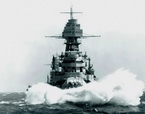AlmightyTallest
Posts: 279
Joined: 2/25/2014
Status: offline

|
quote:
have to wonder whether this is more about ROE than actual performance or capability. Would these numbers hold during an actual all out knock down drag out...?
ROE is part of the equation, particularly during Vietnam, where the air target had to be visually ID'd plus the older and less reliable BVR capabilites of that timeframe.
http://www.globalsecurity.org/military/library/report/1995/DM.htm
quote:
The ROEs in place for the air campaign over North Vietnam included restrictions on
where aircraft could fly, what conditions aircraft could attack enemy forces (when they
were considered hostile), and what degree of force could be used both in self-defense and
attack.3 Another part of the ROEs restricted pilots from attacking certain types of targets
that were off limits; some of these were: enemy airfields, SAM sites, power plants, naval
craft in some areas, a 30 mile area around Hanoi, and a 10 mile area around Haiphong.4
The inability to attack certain targets made it difficult to stop the flow of men and material
into South Vietnam, and the requirements to spare North Vietnamese civilians limited the
use of certain types of munitions, such as B-52s and napalm. Until early 1967, in many
instances U.S. pilots were not allowed to engage enemy fighters unless they themselves
had been attacked first.
The recent trend to see, and identify the threat at longer standoff, while also being able to employ BVR weapons at their intended longer ranges changes the equation when factoring in today's capabilities.
< Message edited by AlmightyTallest -- 6/24/2014 4:39:31 PM >
|
 Printable Version
Printable Version








 New Messages
New Messages No New Messages
No New Messages Hot Topic w/ New Messages
Hot Topic w/ New Messages Hot Topic w/o New Messages
Hot Topic w/o New Messages Locked w/ New Messages
Locked w/ New Messages Locked w/o New Messages
Locked w/o New Messages Post New Thread
Post New Thread